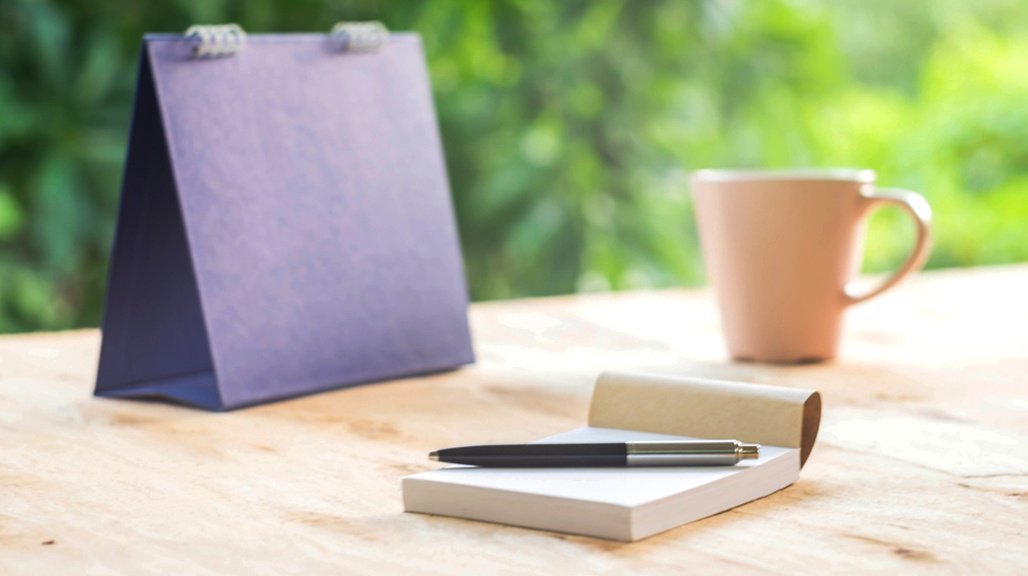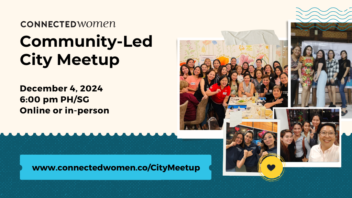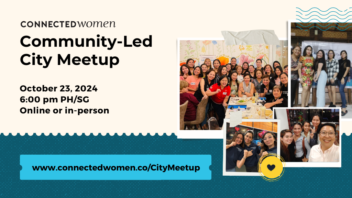Q and A: How To Organise Your Time To Increase Productivity
 Contributed by
Anh Thu Nguyen
December 1, 2016
Contributed by
Anh Thu Nguyen
December 1, 2016

Learning how to manage our schedules so that we can be at our most efficient can seem like a very difficult task at times – But all it takes is knowing the key to organising our time to make the most out of every minute.
In this Q&A session, Samantha asks for suggestions on how to better organise her time and be more productive:
I wanted to ask you for some advice on how to organise my days and my tasks in order to achieve my objectives. I always have a thousand things in mind and a thousand things to do, but I seem to end up going to pieces and not finishing anything.
Dear Samantha,
What a great question! Productivity and organisation are areas I’ve had to deal with too, time and time again, and I’m sure many entrepreneurs have had similar run-ins at some point.
Oh, the number of times I’ve had a thousand ideas and projects I want to pursue, only to end up empty-handed! That is, until I discovered a method, as simple as it is effective, to – yes! – organise my days. I’ll explain it to you in this article.
I can tell you right away that my secret is this: Having a really good system for managing my daily activities.
To do that, I use a simple form1. But first things first. Let’s see why this form is so important, and how it works.
Eliminate The Unnecessary And Learn To Say No
First of all, it’s important to be aware that no, you DON’T need to do everything all at the same time in order to achieve a thousand things. As you well know, we all have 24 hours in our day. Our time is limited. And what’s more, our energy is limited too.
Although this suggestion may disappoint you, the point is that as much as possible, we should try to cut out anything that isn’t necessary. Instead of focusing on a thousand things at once, it’s better to concentrate on a few at a time.
So look critically at all your ideas, and make an informed decision on which of them to give priority to. This means you have to eliminate the unnecessary, and give some things up. It’s only by saying NO to certain things that you can say YES to others – the most important ones.
To know which things to say YES to and which to say NO to, you need to be clear on your long-term objectives and your life vision. Bear in mind that anything which isn’t bringing you closer to your long-term vision may just be a waste of time. It’s best to cut it out.
If It’s Not Planned, It Doesn’t Exist
To better manage your time and increase your productivity, you need to deal with matters in a ‘professional’ manner -even if we’re talking about your daily life.
What do I mean by this? That you can and should manage your ideas and your personal projects just as though they were work issues.
I’m sure that for work you have an agenda that you use to manage your tasks, deadlines, meetings etc. Why not implement something similar for your personal life? The principle is this: If it’s not planned, it doesn’t exist. So let’s plan!
To have the time to do everything you want, you need to CREATE the time and devote it to the specific activity. This means blocking off the necessary time in your diary to make room for it.
Define Weekly Objectives
OK Anh, I’m with you so far, but how can I do this in practice?
To do this I use a paper planner that I printed from this site1. I find it excellent, because it helps me to be more productive day in day out, and to follow through on my planned activities.
Every Monday morning I identify three objectives I want to achieve by the end of the week. Of course, I try to remain realistic about this, and consider the time I have available, my existing commitments, and unanticipated things that may come up. For example, this week my objectives were:
1. Finish the online course.
2. Create new content for the blog.
3. Sort out the technical aspects of the website.
It’s important to be realistic. Setting your sights high is fine, but I think it would be pointless to spread yourself thinly if this means you don’t end up seeing anything through.
Try it yourself: Print out a form for each day of the week – so seven in total. Then write your three objectives in the relevant box on the page, repeating this for each day of the week.
You might think this is pointless or boring – writing them down every day. But I can assure you that this repetition will send a strong signal to your brain, telling it which things you need to focus on (just these three!).
Identify Daily Priorities
Now that you have your seven forms with your weekly objectives, set aside some time every morning to dedicate exclusively to planning your day.
If you want, you can even do this the night before. The point is to create that 15-minute space – just enough time to plan out your day.
It might seem counterintuitive: you’re spending more of the already limited time you have on organising. In fact, it’s precisely by spending those few initial minutes on planning that you’ll manage to be even more focused and efficient during the day. This is the only way to be sure of increasing your productivity.
So take your form and write down your three priorities for the day. Which activities do you definitely want to have completed by this evening? Put them in order of importance. Here, too, be honest with yourself: Don’t write things just for the sake of it. Work as hard as you can to do what you’ve planned to do.
To give you an example, here are my three priorities for today:
1. Finish module 4 of the course.
2. Create this week’s newsletter.
3. Send a summary and invoice to a client.
And if you already know that it’s going to be a full day in which unexpected things are very likely to come up, just write down a single priority. It’s better to do a few things but do them well, than to start a thousand things and not finish any of them.
Plan Your Day And Implement Your Plan
Now that you have your three priorities for the day, the rest should be child’s play. Review the hours you have available and block off the time you need to complete the required activities.
I suggest adding in some ‘downtime’, or time without any scheduled activity, as a cushion in case something unexpected comes up or a task takes you longer than planned. By doing this, you’ll avoid feeling overstretched and will be able to move from one activity to the next with the necessary composure.
Once you’ve planned out your day, put your plan into action. Keep your schedule within arm’s reach and do only the things you’ve planned to do so that you avoid distractions.
For example, if you’ve decided that between 9am and 11am you’ll write an article, do just that for those two hours. Log out of Facebook, close your email, and don’t look at your phone.
Do everything you can to avoid all possible forms of interruption or distraction. Try with all your might to carry out and complete the planned activity within the scheduled period. And avoid multitasking at all costs; only one thing at a time, please!
Then when it’s 11am, finish the activity you’re doing (writing an article in this example) and move on to whatever you have planned for the subsequent hours. Respect your plan for the day.
Even if you haven’t yet finished what you’re doing, you’ll have the opportunity to carry it over to the next day as your top priority. And, with practice, you’ll be able to more accurately predict how much time you’ll need for each type of activity.
Review Your Day
Finally, when evening comes don’t forget to take stock of your day and evaluate your level of productivity.
Review the priorities you identified: Have you been able to complete them? If so, put a big check mark next to each of them! If not, you can carry them over to the next day.
In the relevant box, write down your victories. What have you done well? What have you managed to finish?
In the other box, write down the lessons you’ve learned or the things you could do better. This is an opportunity for the future!
Finally, one very nice thing I suggest you do, not only to increase your productivity but also to feel generally happier and more satisfied, is to list three things you’re grateful for. What made you happy today? They can even be little things that you’d normally take for granted.
This is because the more you’re aware of your blessings and the good things you have (both material and non-material), the more you’ll be able to attract other positive things. It’s a virtuous circle!
Here we are at the end of the article. To Samantha and all the other readers – I hope you find it useful and that it will help you find more time to tackle your thousand tasks 🙂
I know all this can seem a bit boring, but I can assure you that it has an incredible effect on productivity. And after a while it even becomes a lot of fun to do.
If, like Samantha, you have a question on the subject of business, productivity or personal growth, you can write me, I’ll be happy to respond.
How about you? How do you organise your days? Let me know your answers in the comments box. Share what has worked for you.
We would love you to be part of the CW community!
Join now to share, connect, work and learn – it’s free.
JOIN NOW










Sorry, the comment form is closed at this time.